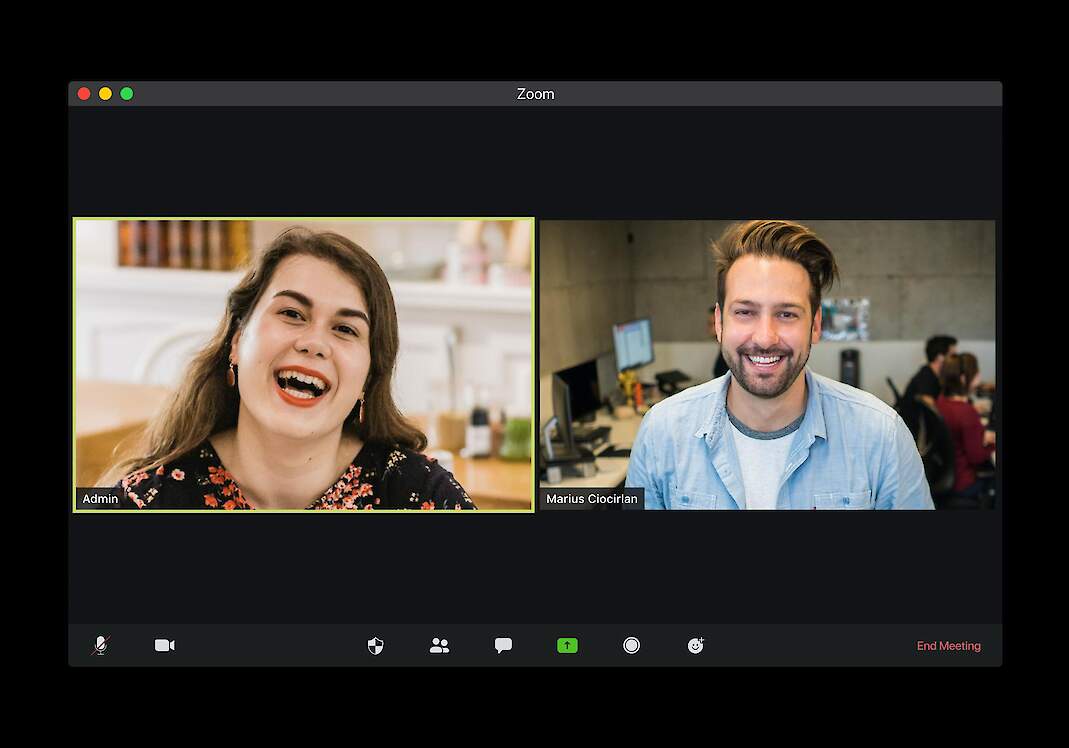
There was a time when those of us who worked in offices thought that the coronavirus pandemic would finally put an end to office meetings.
Oh, what fools we were.
Despite social distancing, office meetings have continued thanks to video conferencing tools like Zoom, Skype, Microsoft Teams and more. And let's face it: sometimes it's necessary to talk face-to-face, even if that also means face-to-screen.
Thus, with the advent of the new era of online conferences and online meetings, held on an online event platform, many have found that there is a new set of guidelines to follow - things that we may not need to discuss in person, but worth repeating now that there are so many people work from the comfort of their own home - or the discomfort, depending on the situation.
Let's face it, working from home is hard. So here are a few suggestions, compiled from Zoom's own website and other sources, to help you stay as productive, connected, and as free from embarrassment as we can as we grapple with this new era of office work.
Use video whenever possible

This allows people to see you and understand that you are not the voice of a highly sophisticated artificial intelligence. This is especially important if you are the meeting host or presenter, and slightly less important if you are a participant.
Dress for the job you have, not the job you'd like to (Don't wear your pajamas).
These are hard times for those who have to work from home, and wearing sweatpants all day is one of the few comforts for these poor souls. But if you can force yourself to wear something more professional looking, it's probably a good thing. You may suddenly find that it makes you feel a little more normal.
Prepare your scene
Keep in mind that people can see not only you, but also what is behind you. It would be nice to make sure in advance that the camera is not directed towards the pile of laundry.
The more light, the better.
Video quality is greatly improved in good lighting conditions. Don't you want everyone to see your pretty face when you've done your best to put on office clothes and such? An additional lamp nearby may be useful. Just make sure the light is in front of you and not behind you - backlight will make it harder to see you.
Try to look at the camera.

If you're speaking in front of a group, looking into the camera will give the appearance of making eye contact with whoever you're talking to. It's definitely better than fixing on your own face with the thought of needing a new haircut.
Become your tech support.
Perform a test run of your broadcast and decide on your video and audio settings. Most video conferencing services allow you to check what your camera is recording and how before you broadcast it to everyone else. Zoom, for example, has a feature that allows you to test your settings before your meetings start: just go to zoom.us/test.
You can also decide ahead of time whether you will enter a video conference with the sound on or off before you start accidentally broadcasting what's on the TV in the next room. And speaking of sound...
Mute when not speaking.

Background noise can be very distracting. If you're not saying anything at the moment, turn off the sound. This way, no one will have to listen to the car alarm that goes off in your area, or your neighbor's constantly barking dog.
Do not eat during the meeting.
Sometimes it can be a little unpleasant to watch other people eat. Or listen to them chew. Stop eating if you can. If not, just turn off the video and sound.
Do not engage in other personal activities during the meeting.

Have you heard any horror stories about people being caught picking their nose or using the toilet during a video conference? The poor fellows thought they had their sound or video turned off. Do not add to this statistic. It can be easy to forget that people can hear or see you if you are in a group of 30 employees, so don't take chances!
Stay focused.
It's a scientific fact that everyone hates meetings. Don't drag this out for longer than necessary. Focus on the task at hand (which can be very challenging when working from home) and keep unnecessary conversations to a minimum. It's very difficult to be productive when multiple people are talking at the same time, and even more so when overlapping audio and shuffling video screens are involved.
Invite only those who should be there.
If there is someone who needs to receive the necessary information, but does not need to participate in the web conference, then this person can be sent information by e-mail. Save people the hassle.
It's not enough that most people don't like meetings (see above). The more participants you have, the more likely it is that the meeting will experience connection or video/audio issues. Watching a recording of a meeting is often just as useful as attending the meeting in person.
Is this a meeting or a webinar?
Most video conferencing tools only allow certain participants to join as viewers. This means that only some people can broadcast with video and audio. If you're doing a presentation rather than a discussion, this might be the right choice.
The host must be the last to leave.

If the host closes the meeting, then obviously the meeting ends. And, as Spider-Man always says, such power clearly comes with a huge burden of responsibility. So to make sure no one is suddenly disconnected or lost at the last minute, it's a good idea for the host to stay online until everyone else has left the meeting.
Make private meetings private.
If you share information on how to join a meeting on a public platform like Facebook, don't be surprised if you get unwanted visitors. Share passwords only with the people you need. Or rather, with people who should be at the meeting. There are colleagues you don't want to see, but just because you don't like the accounting guy doesn't mean you can avoid him forever.
Learn how to lead participants.
There are many features on these platforms, such as screen sharing, blocking a meeting for current participants, removing or placing participants on hold, file transfer, and managing chat options. It might be helpful to know what you can do and how to do it before the meeting starts.
We also recommend that you read:
Web Conference: What can go wrong with a live stream?
Learn more about the possibilities of the online event platform OnlineExpo